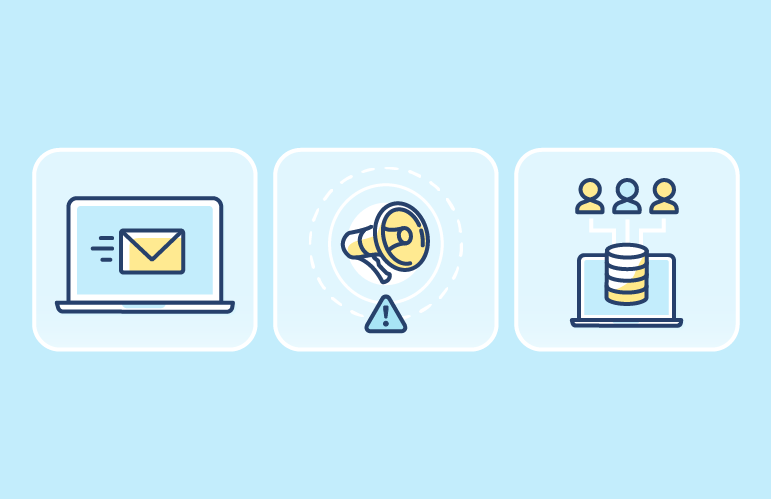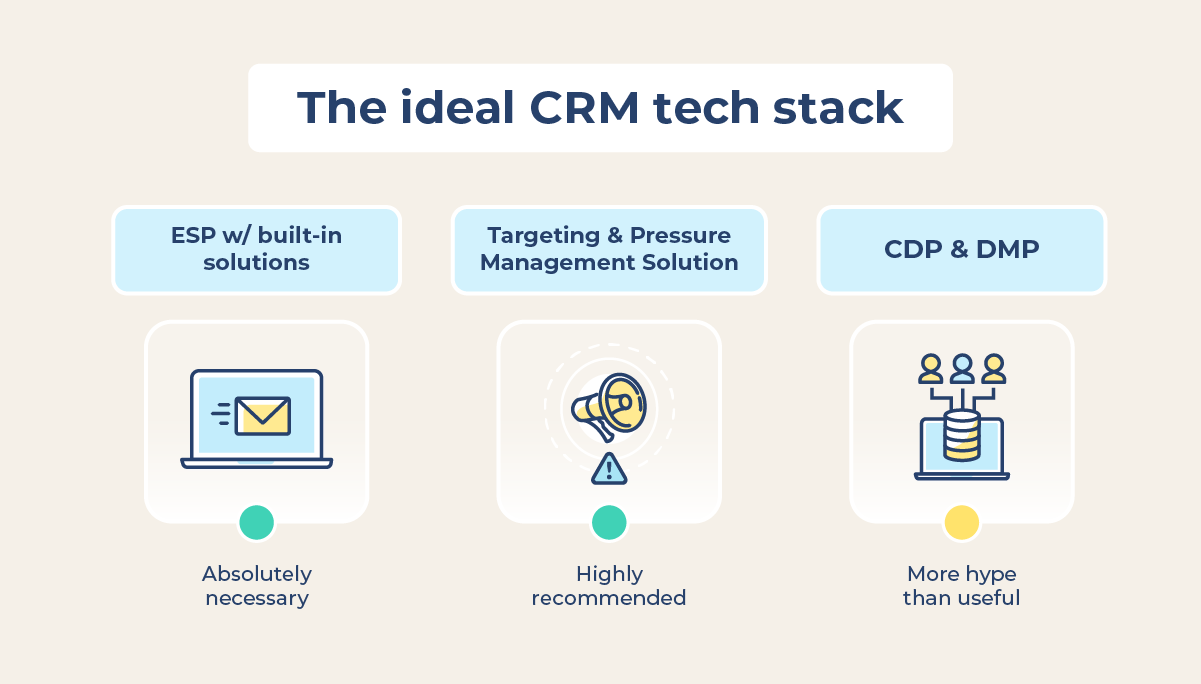Three Keys to CRM Success: Part 3, Your Tech Stack


Catégorie : Stratégie CRM
Welcome to the final post in our Three Keys to Success in CRM series
This series is a follow-up to our State of CRM Report, based on a survey in which 100 CRM professionals from around the world answered questions about their CRM team, strategy, challenges, and goals for 2021.
The final tip in this series is an obvious one: in order to be customer-centric, you need the right equipment to get the job done.
Let’s take a look at the tech stacks marketers are relying on to execute best-in-class CRM strategies.

The most obvious and fundamental tool that CRM teams have in their stack is the ESP, or Email Service Provider. Your ESP is the backbone of the email marketing strategy and a complete assessment of your ESP’s capacities is necessary.
As teams activate more channels for CRM, they need their ESPs to operate as more of a central hub to help streamline the campaign process, not just for email campaigns. Advanced features like analytics, plug-ins for push, email templating, etc. are necessary features so that teams can work more efficiently and effectively.
This is especially true as push app and recommendation engines are more commonly part of the CRM stack.
Another fundamental part of every CRM stack is an analytics solution. In some cases, it is a feature of the ESP, but in the overwhelming majority of responses to our survey, teams were utilizing Google Analytics.
Campaign pressure management is sometimes one of the advanced features ESPs offer, but if that is not the case, considering a tool that enables you to measure and manage campaign pressure is very important.
We continue to hear loud and clear from CRM teams that customer-centricity is still their top priority and more often than not CRM teams face challenges balancing their business priorities with their customer experience.
This is where pressure management systems play a critical role in helping teams to prioritize messaging and manage pressure in order to prevent customer fatigue and improve customer experience.
Splio is a great example of a tool that CRM managers use to manage pressure and deliver targeted, relevant content to their customers.
Despite the buzz in the marketplace around CDPs and DMPs, our survey did not show that CDPs and DMPs are necessary tools in the tech stack, not even among the most advanced CRM teams and strategies. The majority of respondents said they do not have either as part of their stack.
A common thread and important consideration when discussing the different tools is the ability for the tools in a stack to be able to work together or have the ability to connect with vendors you might consider in the future.
Connectors and partnerships are really helpful when you are trying to quickly activate new strategies or new channels. It seems like an obvious consideration but making sure you don’t lock yourself into a tool that doesn’t allow your strategy to evolve or stack to grow is critical to success.
That’s a wrap for the 3 keys to CRM success! If you haven’t already, check out part 1 and part 2 of the series.